You want fast, reliable access to your data. Top real time data integration tools can help you connect hundreds of applications and unlock real-time insights for smarter decisions:
- FineDataLink
- Apache Kafka
- Fivetran
- Talend Data Fabric
- Informatica Cloud
- Microsoft Azure Data Factory
- StreamSets
- Google Cloud Dataflow
- AWS Glue
- Qlik Data Integration
- Striim
- Rapidi
The market for automated data integration and no-code data integration is booming, with companies using real-time analytics and etl tools to stay ahead. FineDataLink by FanRuan stands out for real-time access and seamless integration. As you explore options, think about your business goals and choose the solution that fits your needs.
Here’s a quick look at the latest adoption statistics:
| Statistic | Value |
|---|---|
| Data integration market size in 2024 | $15.24 billion |
| Percentage of applications integrated | 29% |
| Average number of applications per enterprise | 897 |
What Are Real Time Data Integration Tools?
Core Functions and Benefits
When you use real time data integration tools, you get more than just a way to move data. These tools help you bring together information from many places, so you always have the latest updates at your fingertips. Here’s what they can do for you:
- Bring together transactional, behavioral, and even external threat data without hassle.
- Power up analytics engines to spot issues fast, which helps with things like fraud detection and staying compliant.
- Feed AI models with fresh, real-time data streams for better predictions.
- Give you a single view of all your data through data virtualization, which saves you time and money.
- Keep different systems in sync, so your data stays accurate and storage costs go down.
- Process data with very low delay and high speed, so you never miss a beat.
- Make sure data gets processed only once, which helps you save on costs.
- Combine data before sending it to its final spot, cutting down on storage and computing needs.
Tip: When you use data integration tools with these features, you can handle big data loads and keep everything running smoothly.
Why Businesses Need Real Time Data Integration
You want your business to run like a well-oiled machine. Real-time data integration makes that possible. Take a look at how it helps:
| Benefit | Description |
|---|---|
| Enhanced Decision-Making | You get up-to-the-minute data, so you can make smart choices quickly. |
| Improved Data Synchronization | Your teams always see the same info, which means fewer mistakes. |
| Optimized Operational Efficiency | Automation cuts down on manual work and errors, freeing you for big ideas. |
| Enhanced Customer Experience | Real-time insights help you give customers what they want, right when they want it. |
| Scalability | You can grow your business without worrying about slowdowns. |
| Flexibility | Easily connect new systems as your needs change and your business evolves. |
If you rely on outdated information, you might miss out on new opportunities. Slow data can lead to mistakes, unhappy customers, and even trouble with compliance. As your company grows, the amount of data you handle gets bigger. Without real-time solutions, you risk bottlenecks and higher costs. Real time data integration tools help you avoid these problems and keep your business moving forward.
Top Data Integration Tools for 2025

Choosing the right real time data integration tools can transform how you manage and use your data. Let’s look at the top platforms that will power your business in 2025. Each one brings something special to the table, so you can find the best fit for your needs.
1.FineDataLink by FanRuan
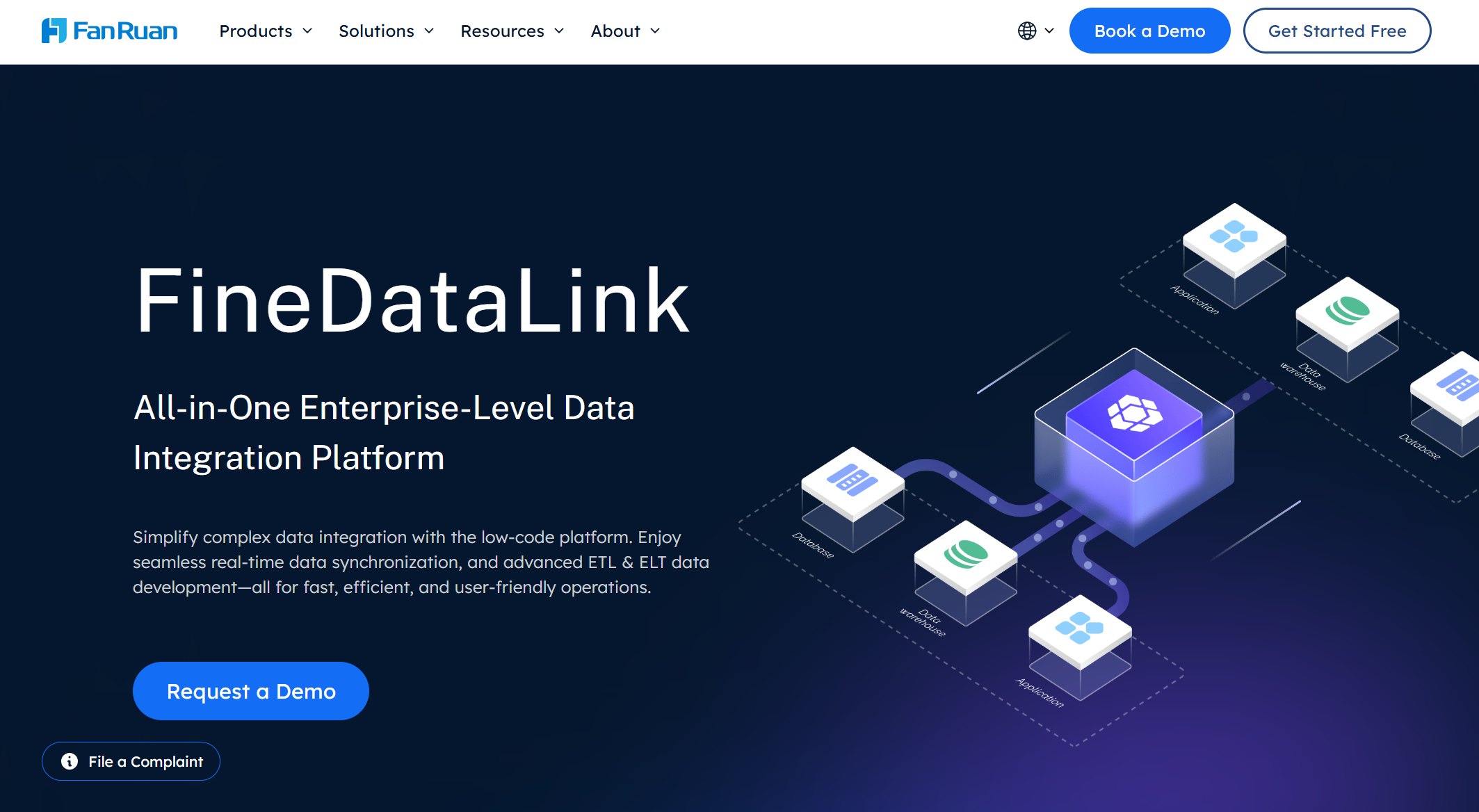
Website: https://www.fanruan.com/en/finedatalink
If you want a modern, low-code solution that makes real-time data integration simple, FineDataLink by FanRuan is a top choice. You get a visual, drag-and-drop interface that lets you build data pipelines without writing code. FineDataLink synchronizes data across multiple tables with latency measured in milliseconds. You can connect to over 100 data sources, including cloud apps and on-premises databases. This flexibility means you can automate ETL processes, schedule jobs, and monitor everything in real time. FineDataLink helps you build a real-time data warehouse, manage data governance, and break down silos—all while keeping things cost-effective and user-friendly. If you want a data integration platform that grows with your business, this tool stands out.
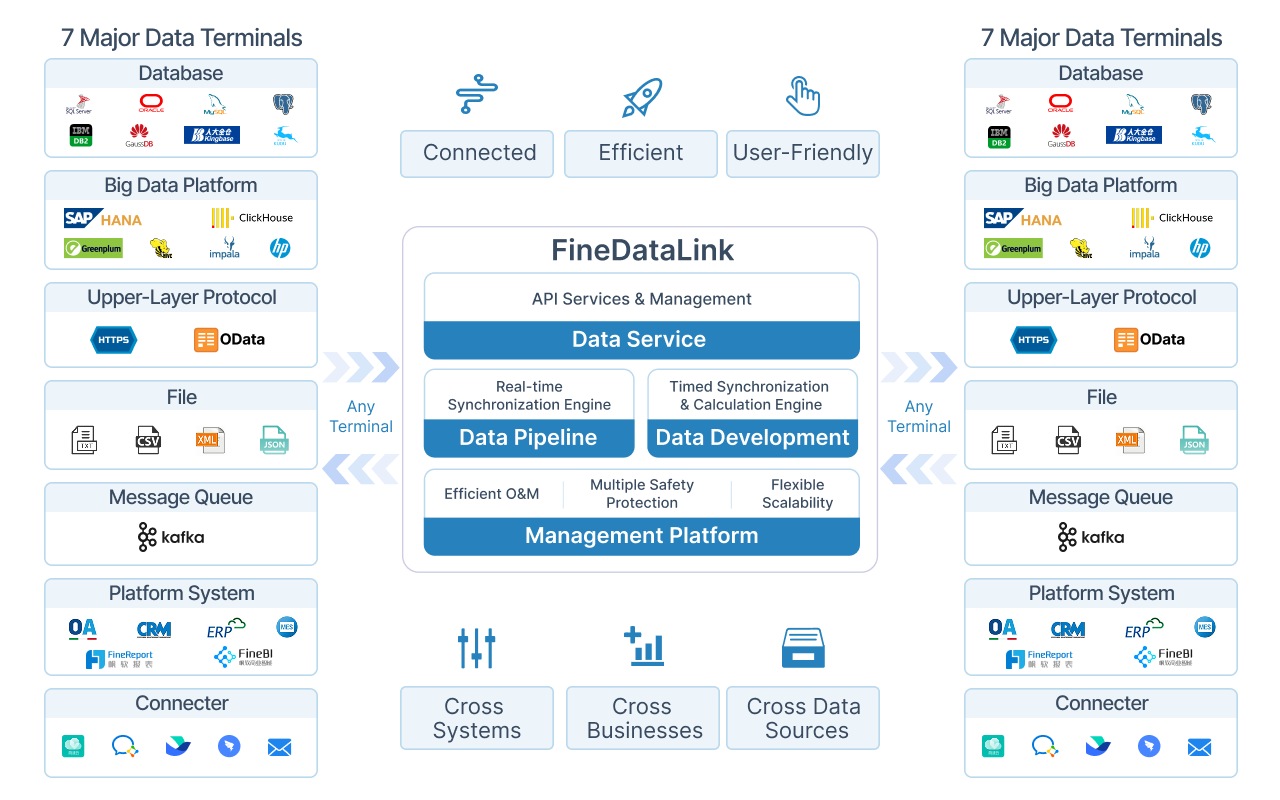
2.Apache Kafka
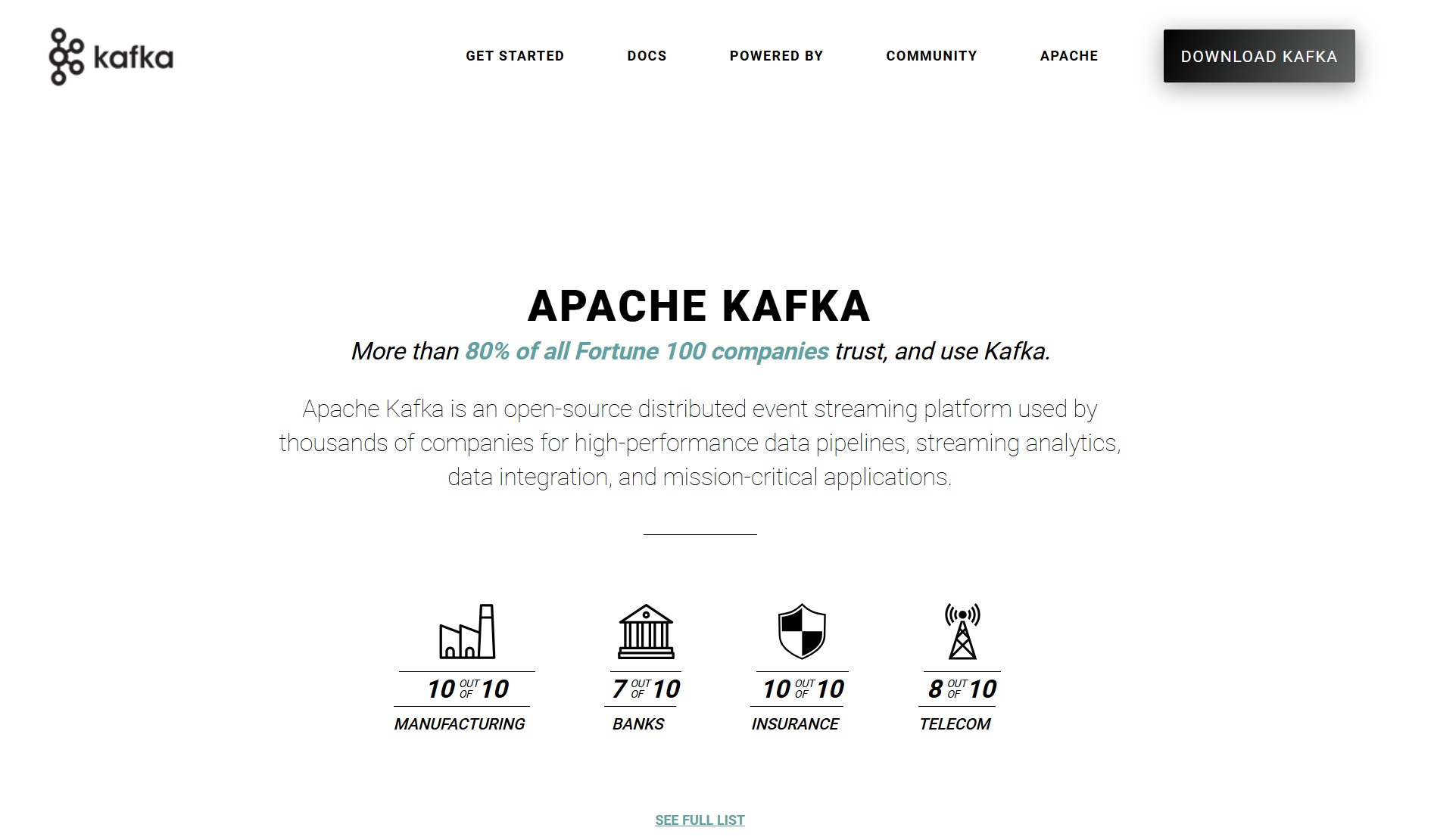
Website: https://kafka.apache.org/
You might know Kafka as the backbone of many real-time data integration tools. Kafka lets you build data pipelines that move information between systems as soon as it’s created. You can shift from slow batch processing to real-time streaming, which helps you make quick, data-driven decisions. Kafka ingests, stores, processes, and analyzes data as it arrives. This makes it perfect for real-time analytics and monitoring. You get a flexible, scalable way to handle massive data streams without missing a beat.
3.Fivetran

Website: https://www.fivetran.com/
Fivetran takes the hassle out of managing data pipelines. You don’t have to worry about schema changes or vendor updates—Fivetran’s fully managed connectors handle it all. This automation means you spend less time on ETL tasks and more time on analysis. Fivetran standardizes data replication, so you get real-time analytics and better decision-making. You can scale quickly, gain deeper customer insights, and future-proof your data architecture. If you want to focus on growth instead of maintenance, Fivetran makes it easy.
4.Talend Data Fabric
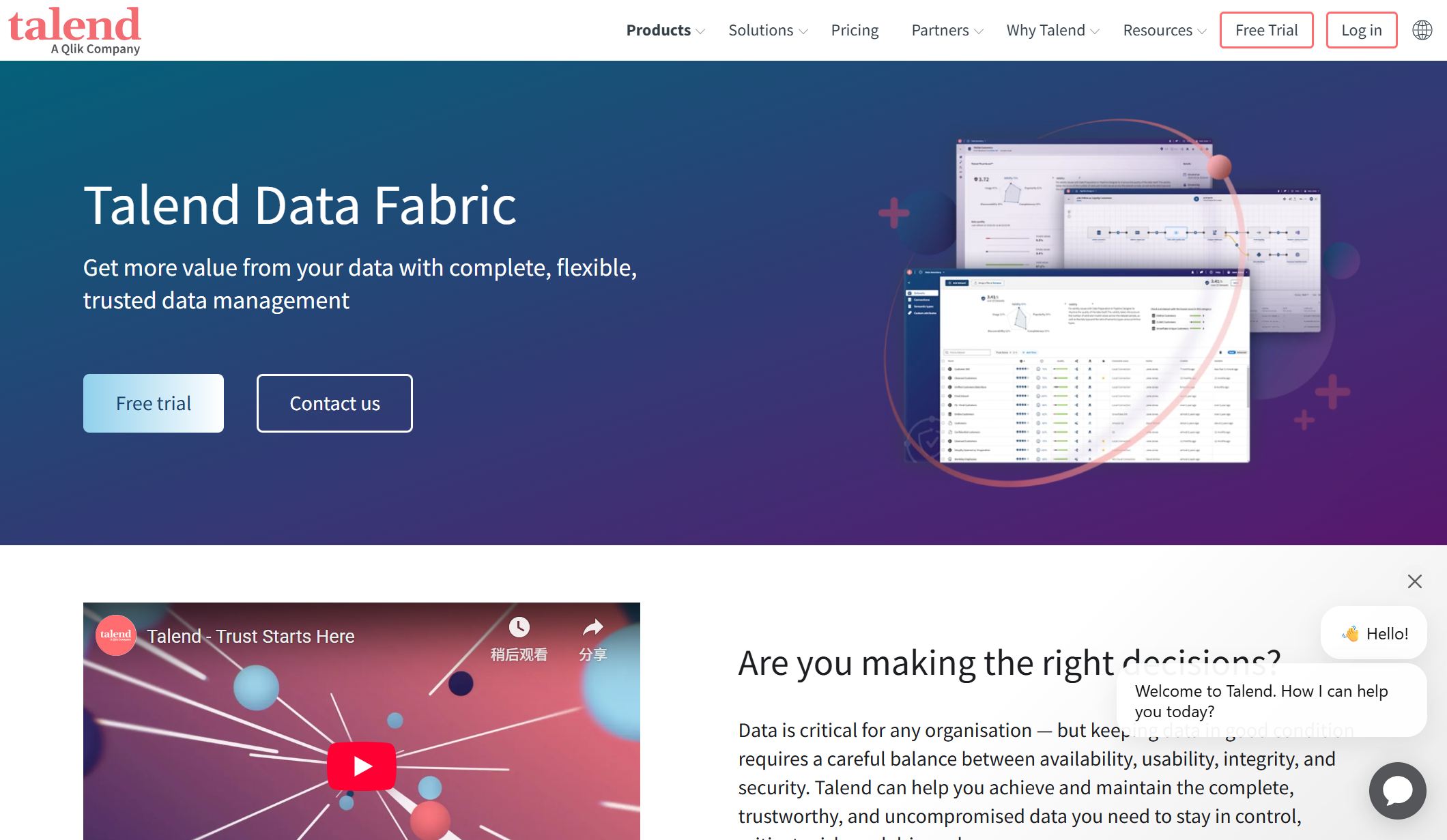
Website: https://www.talend.com/uk/products/data-fabric/
Talend Data Fabric brings together real-time ETL, data quality, and governance in one platform. You can use Change Data Capture (CDC) for continuous data synchronization without reloading entire tables. The visual development tools let you extract, transform, and load data from over 1,000 sources. Talend’s low-code approach means you can build and manage data pipelines quickly. Eneria, for example, uses Talend CDC for real-time data sync, showing how well it works in action.
| Feature | Description |
|---|---|
| Real-time processing | Change Data Capture (CDC) for continuous data synchronization without full table reloads. |
| Comprehensive ETL/ELT engine | Extract, transform, and load data from 1,000+ sources using visual development tools. |
| Low-code platform | Combines data integration, data quality, and data governance in a unified solution. |
5.Informatica Cloud
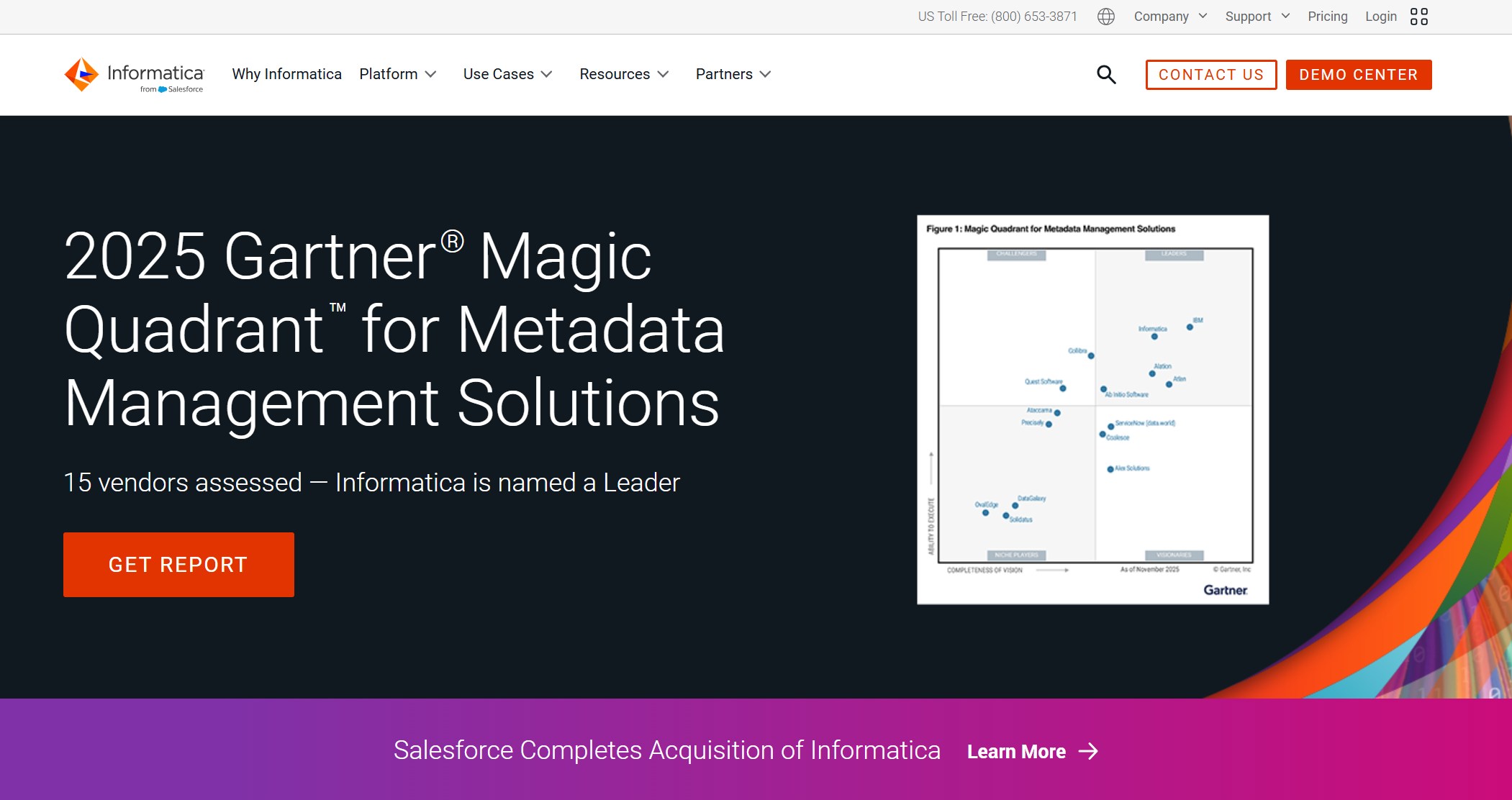
Website: https://www.informatica.com/
Informatica Cloud stands out for its scalability and ability to connect a growing number of applications. You can process data in both batch and real-time modes, using traditional ETL or modern ELT. Informatica synchronizes data between apps automatically, capturing only changes to save time. The platform consists of turnkey cloud services and a flexible integration platform, so you can handle any workflow. If your business needs to scale fast and connect diverse systems, Informatica Cloud is a strong choice.
| Aspect | Description |
|---|---|
| Scalability | The solution can handle growing data volumes and increasing numbers of applications. |
| Application Integration | Excels in real-time data processing and connecting diverse applications, ideal for dynamic workflows. |
6.Microsoft Azure Data Factory

Website: https://azure.microsoft.com/en-us/products/data-factory
Azure Data Factory helps you move and transform data in real time across cloud and hybrid environments. You can use event-driven triggers for immediate processing, which keeps your analytics up to date. Azure Data Factory integrates with Azure Event Grid for minimal latency. You also get strong monitoring and error handling tools, so your data pipelines stay reliable. Whether you’re connecting cloud or on-premises sources, Azure Data Factory gives you secure, real-time integration.
| Feature | Description |
|---|---|
| Real-Time Data Movement | Utilizes event-driven triggers for immediate data processing. |
| Integration with Azure Event Grid | Supports real-time analytics with minimal latency. |
| Monitoring and Error Handling | Provides tools to ensure reliable data integration and transformation. |
7.StreamSets
Website: https://www.ibm.com/products/streamsets
StreamSets makes real-time data integration and pipeline monitoring easy. You can capture data from databases, IoT devices, and apps, then process it as soon as it arrives. StreamSets transforms raw data into formats ready for analysis and combines information from different sources in real time. You can monitor business operations, gain instant customer insights, and optimize processes based on current data. StreamSets helps you keep everything running smoothly, even as your data grows.
8.Google Cloud Dataflow

Website: https://cloud.google.com/products/dataflow
Google Cloud Dataflow handles both streaming and batch data, making it a great fit for large-scale, real-time applications. You can process data as it arrives, group it into time windows, and set triggers for when results should be sent. Dataflow ensures each event is processed only once, so your analytics stay accurate. You can connect Dataflow with BigQuery, Pub/Sub, and AI tools for advanced analytics and real-time predictions. If you need to power live dashboards or detect fraud instantly, Dataflow has you covered.
9.AWS Glue

Website: https://aws.amazon.com/glue/
AWS Glue automates complex data workflows, so you don’t have to worry about manual errors. It scales automatically to handle any workload size. You can integrate Glue with other AWS services like S3, Redshift, and Athena. Glue brings in data from many sources, transforms it, and loads it into your analytics tools. This makes it a solid choice for real-time data integration in the cloud.
| Capability | Description |
|---|---|
| Automation | Automates complex data workflows, reducing manual effort and human errors. |
| Scalability | Automatically scales to handle workloads of any size, eliminating concerns about resource allocation. |
| Integration | Seamlessly integrates with other AWS services like Amazon S3, AWS Redshift, and Amazon Athena. |
| Data Ingestion | Facilitates bringing data into the ecosystem from various sources. |
| Data Transformation | Cleans, aggregates, and applies business logic to prepare data for analysis. |
| Data Loading | Moves processed data into analytics tools such as Amazon Redshift or Athena. |
10.Qlik Data Integration
Qlik Data Integration focuses on real-time data replication and analytics. You can use Change Data Capture (CDC) to stream updates as they happen, so your downstream systems always have the latest information. Qlik eliminates batch processing, giving you instant insights. This agility helps you respond quickly to market trends and operational challenges. Financial institutions use Qlik to spot fraud instantly, while healthcare providers monitor patient data in real time.
Website: https://www.qlik.com/us/data-integration/data-integration-platform
| Feature | Description |
|---|---|
| Change Data Capture (CDC) | Continuously monitors and streams real-time changes, ensuring downstream systems have the latest data. |
| Real-Time Insights | Eliminates batch processing, allowing businesses to achieve insights based on the freshest information. |
| Business Agility | Enables quick responses to market trends and operational challenges by providing current data for decision-making. |
11.Striim
Striim gives you real-time data streaming and integration across hybrid environments. You can capture and move data from over 150 connectors with sub-second latency. Striim supports Change Data Capture (CDC) for database changes without downtime. You can process and transform data in-flight using SQL queries, and the platform handles millions of events with in-memory processing. Striim makes it easy to move data from on-premises to the cloud, optimizing storage and analytics.
Website: https://www.striim.com/
| Capability | Description |
|---|---|
| Real-Time Data Integration | Captures and moves data from various sources with sub-second latency, supporting 150+ connectors. |
| Change Data Capture (CDC) | Enables real-time capture of database changes without downtime, supporting major databases. |
| Streaming SQL and Analytics | Allows processing and transformation of data in-flight using SQL-based queries for real-time insights. |
| In-Memory Processing | Provides high-performance processing with caching and stateful stream handling for millions of events. |
| Hybrid Cloud Integration | Facilitates continuous data movement from on-premises to cloud environments, optimizing cloud storage. |
12.Rapidi
Rapidi solves real-time data synchronization for mid-sized businesses with a no-code integration platform. You don’t need programming skills to connect different systems. Rapidi scales easily and offers strong connectivity, so you can manage data efficiently as your company grows. If you want a simple, flexible way to keep your data in sync, Rapidi is a smart pick.
Website: https://www.rapidionline.com/
Tip: When you compare these real time data integration tools, think about your current systems, your team’s skills, and how much you want to automate. The right choice will help you unlock the full value of your data and keep your business agile.
Key Features of Leading Data Integration Tools
Scalability and Performance
You want your data integration platforms to keep up as your business grows. Scalability and performance matter when you handle more data or add new systems. Some platforms use ETL, which needs powerful servers and longer batch windows as data increases. Others use ELT, taking advantage of cloud flexibility but still facing batch limits. The best real-time data integration platform uses event-driven architecture. This means it processes changes as they happen, so you never fall behind.
| Approach | Scalability Characteristics |
|---|---|
| ETL | Needs stronger servers and longer batch windows as data grows. |
| ELT | Uses cloud elasticity for processing but still has batch window limits. |
| Real-Time Integration | Scales with event-driven design, handling changes instantly. |
FineDataLink stands out here. You get real-time synchronization with minimal delay, even as your data grows.
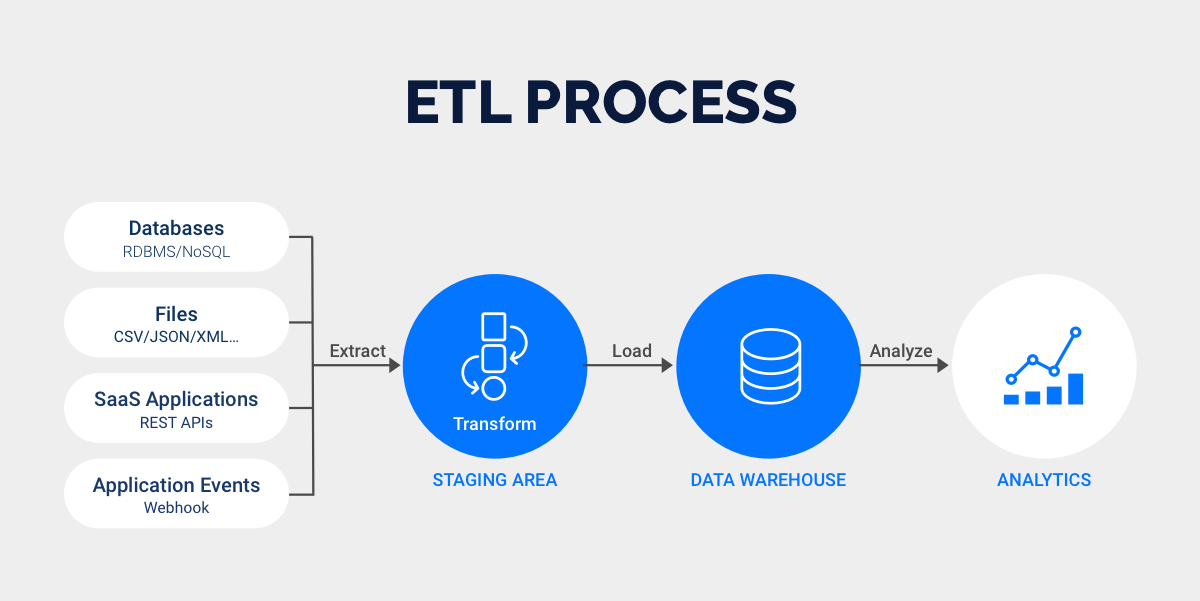
Integration Capabilities
You need your data integration platforms to connect with everything—cloud apps, on-premises databases, and more. Top platforms offer pre-built connectors, API management, and support for both cloud and on-premises data. This flexibility helps you break down data silos and keep information flowing.
| Feature | Description |
|---|---|
| Pre-built connectors | Quick connections to many data sources without heavy coding. |
| API management | Easy creation and management of APIs for smooth data flow. |
| Cloud and on-premises | Connects both cloud and on-site data for maximum reach. |
| Security | Keeps your data safe during integration. |
| High availability | Makes sure your tools are always up and running. |
FineDataLink supports over 100 data sources, so you can integrate almost anything you need.
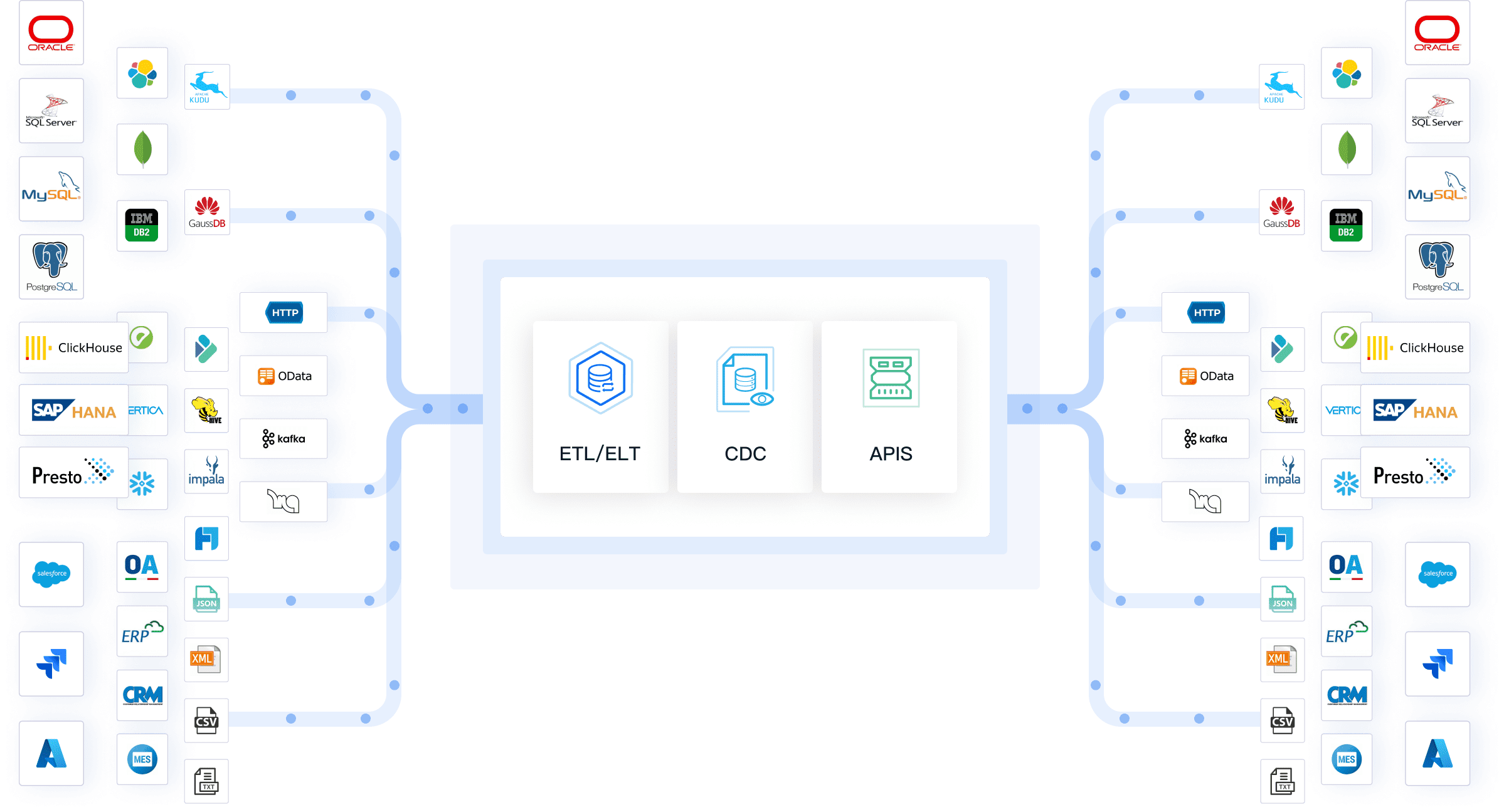
Ease of Use and Automation
No-code and low-code features make data integration platforms easier for everyone. You can drag and drop to build pipelines, automate workflows, and reduce manual work. Many platforms offer prebuilt connectors, workflow automation, and even AI-driven recipes. FineDataLink gives you a visual interface and low-code tools, so you can set up real-time pipelines without writing code.
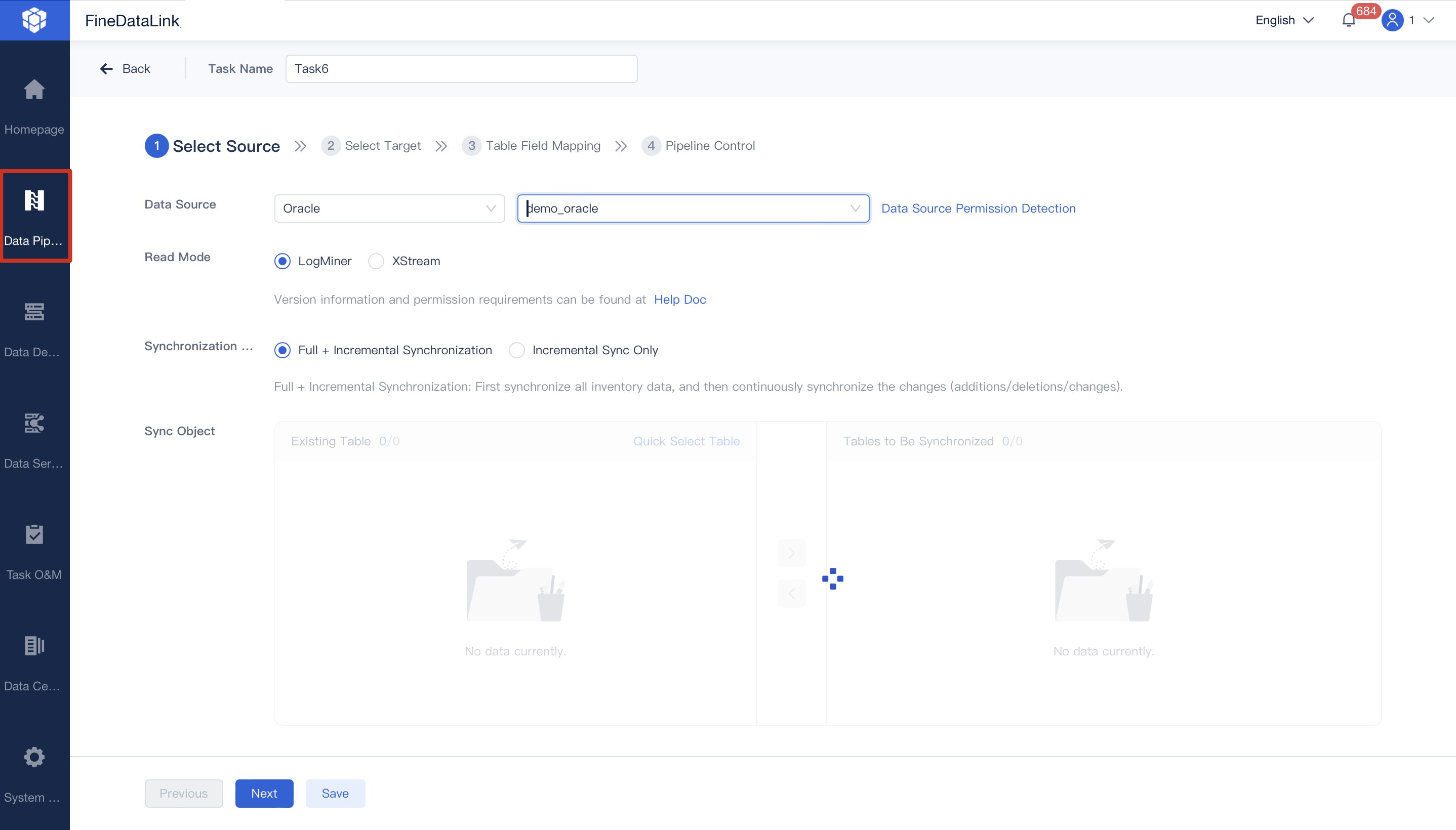
Tip: No-code automation means you spend less time on repetitive tasks and more time on insights.
Security and Compliance
You want your data integration platforms to protect your data and follow the rules. Leading platforms comply with standards like GDPR and HIPAA. They use privacy-by-design, encryption, and access controls. You should look for tools that offer strong security, clear agreements, and regular risk checks.
- Implement strong security measures
- Use encryption for sensitive data
- Set up access controls
- Train your team on security best practices
Support and Community
Great vendor support and active communities help you get the most from your data integration platform. You can find answers, share ideas, and solve problems faster. FineDataLink offers detailed documentation, training, and a helpful support team. When you choose a platform with strong support and a vibrant community, you set yourself up for long-term success.
How to Choose the Right Real Time Data Integration Tool
Assessing Business Needs
Start by looking at what your business really needs. Think about the size of your company, the industry you’re in, and how complex your data is. You want a tool that adapts to different data sources and can grow with you. Make sure it has strong data transformation features, so you don’t get stuck cleaning up data by hand. Ask yourself who will use the tool and how tech-savvy they are. If your team prefers simple tools, look for a platform with a friendly interface and clear instructions.
Tip: Check if the tool supports both batch and real-time integration. This helps you handle scheduled jobs and instant updates with ease.
Evaluating Cost and ROI
You want to get the most value for your money. Look at both the price tag and the benefits. Count the hours you’ll save by automating manual tasks. Think about how much faster your team can work and how quickly you’ll see results. To figure out the payback period, divide the total cost by the monthly savings. Don’t forget to include things like better teamwork and happier customers in your calculations.
Vendor Support and Ecosystem
Great support can make all the difference. Choose a vendor with a strong reputation and a helpful support team. Look for detailed guides, training videos, and a community where you can ask questions. FanRuan, for example, offers rich documentation and customer stories that show real-world success. You want a partner who keeps improving their product and listens to your feedback.
Planning for Growth
Pick a tool that grows with you. Look for features like data orchestration and a unified data layer. These help you manage more data and new systems without extra headaches. A platform that supports self-service and automation lets your team handle more tasks on their own. This way, you stay ready for whatever comes next.
Note: Choosing the right tool now sets you up for long-term success. Take your time, compare options, and think about where your business is headed.
Data Integration Tools Comparison Table

You want to see how these top data integration tools stack up side by side. A clear table helps you spot the differences fast. Below, you’ll find a handy comparison of some of the most popular real-time data integration platforms, including FineDataLink, MuleSoft, Boomi, Talend, and Microsoft Azure Data Factory. This table covers pricing models, scalability, and key features so you can make a smart choice for your business.
| Tool | Pricing Model | Scalability | Key Features |
|---|---|---|---|
| FineDataLink | Affordable, low-code subscription | Scales with business growth | Real-time sync, ETL/ELT, 100+ connectors, visual interface, API integration, drag-and-drop |
| MuleSoft | Enterprise pricing (cores/usage) | Best for large organizations | Complex integration, API management, strong security, supports hybrid environments |
| Boomi | Subscription (connectors/environments) | Mid-to-large organizations | No-code, fast deployment, prebuilt connectors, cloud-native, workflow automation |
| Talend | Open-source & enterprise (features) | Flexible and customizable | Real-time ETL, data quality, governance, visual tools, CDC, open-source option |
| Azure Data Factory | Consumption-based | Scales with usage | Event-driven, hybrid integration, strong monitoring, pay-as-you-go, cloud and on-premises |
Tip: If you want a tool that grows with you and keeps things simple, FineDataLink’s low-code platform and wide connector support make it a strong pick. For large, complex needs, MuleSoft and Boomi offer robust enterprise features. Talend gives you flexibility, especially if you like open-source options. Azure Data Factory works well if you prefer pay-as-you-go and need tight cloud integration.
Here’s what you should consider:
- FineDataLink gives you a visual, drag-and-drop interface and supports over 100 data sources. You can set up real-time pipelines without coding.
- MuleSoft fits best if your company has complex, long-term integration needs.
- Boomi works well for mid-sized to large businesses that want fast, no-code deployment.
- Talend lets you start with open-source and scale up as you need more features.
- Azure Data Factory keeps costs low at first but watch your usage as you grow.

You can use this table to match your business needs with the right tool. Think about your team’s skills, your budget, and how much you want to automate. The right choice will help you unlock the full power of your data.
Picking the right real-time data integration tool can shape your business success in 2025. You want a solution that fits your goals and grows with you. Check out this table to help you match features with your needs:
| Key Consideration | Description |
|---|---|
| Number of Supported Data Sources | Make sure your tool connects to all the data you use. |
| Data Update Frequency | Decide if you need instant updates or scheduled ones. |
| Data Transformation | Look for easy ways to change and combine your data. |
| Scalability | Choose a platform that can handle more data as you grow. |
| Security and Compliance | Protect your data and follow the rules. |
Ready to move forward? Try these steps:
- Set clear goals for your data integration project.
- Test a few tools with a free trial or demo.
- Ask integration experts for advice.
- Keep learning about new technologies like FineDataLink by FanRuan.
Stay curious and keep your business ready for the future!
Continue Reading About Real Time Data Integration Tools
Enterprise Data Integration: A Comprehensive Guide
What is enterprise data and why does it matter for organizations
Understanding Enterprise Data Centers in 2025
Enterprise Data Analytics Explained for Modern Businesses
FAQ

The Author
Howard
Data Management Engineer & Data Research Expert at FanRuan
Related Articles

Top 10 Database Management Tools for 2025
See the top 10 database management tools for 2025, comparing features, security, and scalability to help you choose the right solution for your business.
Howard
Dec 17, 2025

Best Data Lake Vendors For Enterprise Needs
Compare top data lake vendors for enterprise needs. See which platforms offer the best scalability, integration, and security for your business.
Howard
Dec 07, 2025

Top Data Ingestion Platform Compared
Compare the top 7 data ingestion platforms, including real-time features, integration, scalability, and pricing to find the best fit for your business.
Howard
Dec 04, 2025




